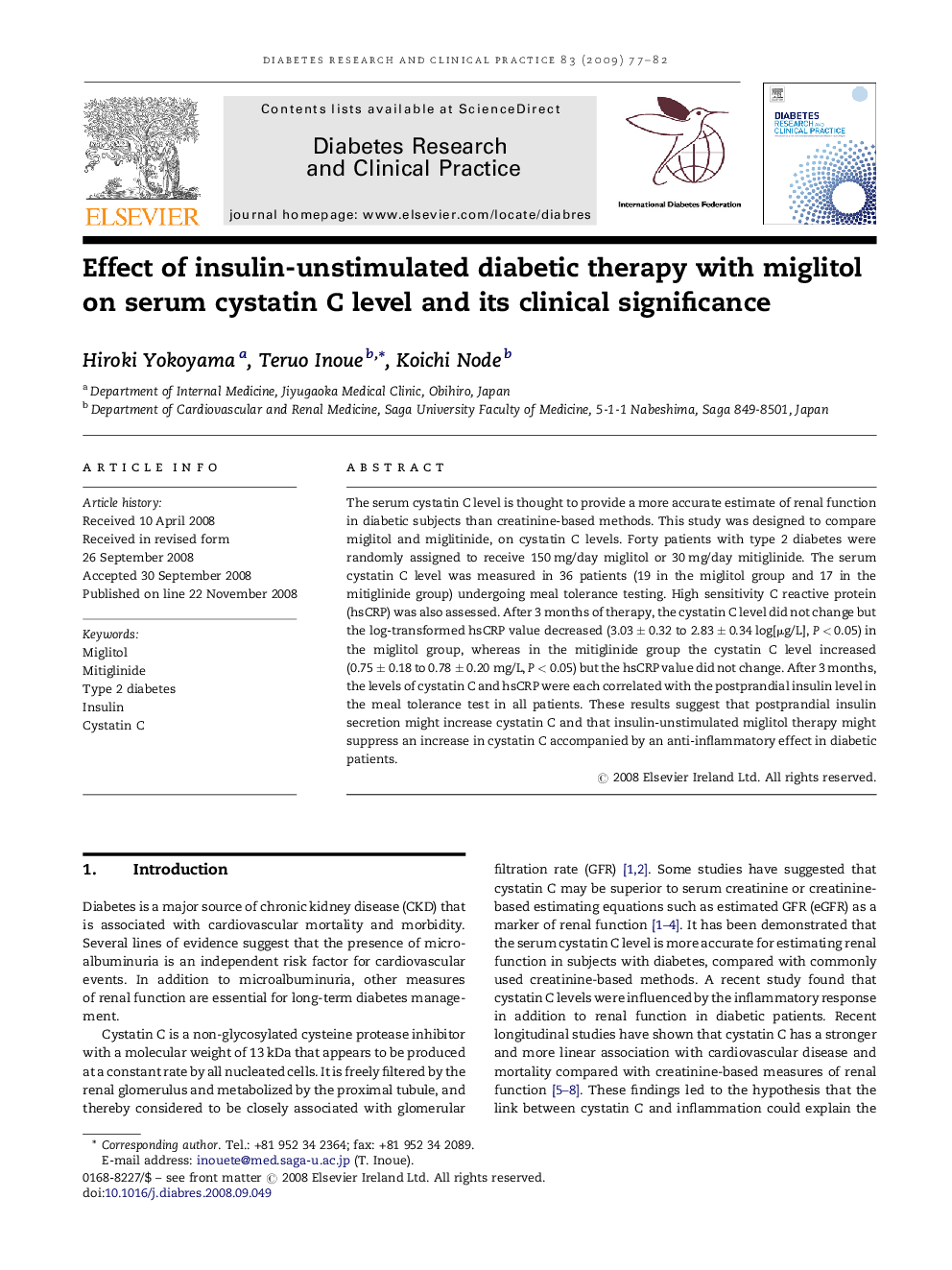| Article ID | Journal | Published Year | Pages | File Type |
|---|---|---|---|---|
| 2797876 | Diabetes Research and Clinical Practice | 2009 | 6 Pages |
The serum cystatin C level is thought to provide a more accurate estimate of renal function in diabetic subjects than creatinine-based methods. This study was designed to compare miglitol and miglitinide, on cystatin C levels. Forty patients with type 2 diabetes were randomly assigned to receive 150 mg/day miglitol or 30 mg/day mitiglinide. The serum cystatin C level was measured in 36 patients (19 in the miglitol group and 17 in the mitiglinide group) undergoing meal tolerance testing. High sensitivity C reactive protein (hsCRP) was also assessed. After 3 months of therapy, the cystatin C level did not change but the log-transformed hsCRP value decreased (3.03 ± 0.32 to 2.83 ± 0.34 log[μg/L], P < 0.05) in the miglitol group, whereas in the mitiglinide group the cystatin C level increased (0.75 ± 0.18 to 0.78 ± 0.20 mg/L, P < 0.05) but the hsCRP value did not change. After 3 months, the levels of cystatin C and hsCRP were each correlated with the postprandial insulin level in the meal tolerance test in all patients. These results suggest that postprandial insulin secretion might increase cystatin C and that insulin-unstimulated miglitol therapy might suppress an increase in cystatin C accompanied by an anti-inflammatory effect in diabetic patients.
